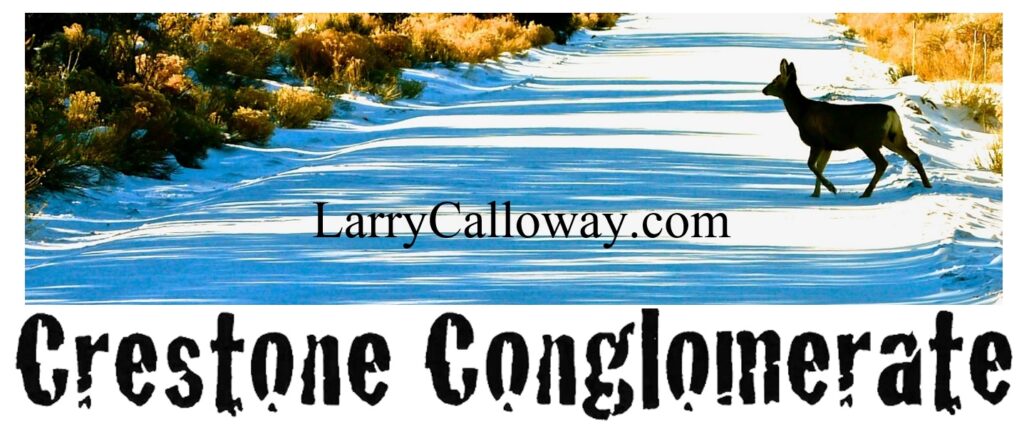By LARRY JOSEPH CALLOWAY (C)
New Mexico is out of highway money, but Gov. Bill Richardson turned back the rapid advance of House bills in the 2003 Legislature that would have provided it by increasing the two major road-fund taxes.
The governor’s alternative will be to refinance the debt left by the creative financing of the previous administration, according to insiders. Gov. Gary Johnson, with the approval of the legislature and the help of Sen. Pete Domenici, R-N.M., borrowed against future federal highway funding and negotiated a longterm payout. Current bond interest rates should be low enough to make refinancing worth while and free up some money for the highway program. But this is a short-term solution.
The House Democrats passed a long-term bill that would have increased the gasoline tax 5.4 cents a gallon, or $70 million a year. When Richardson announced his opposition the bill dropped dead in the Senate. Another House bill increasing the motor vehicle excise tax, the “sales tax” on cars, from 3 to 3.5 per cent met with the same fate.
Richardson, like House Republican leader Ted Hobbs, may have opposed the bills simply because they were tax increases, even though the taxes were rationalized by House Speaker Ben Lujan as highway “user fees.” But there was another problem, behind the scenes. Both bills earmarked the new revenue for specific projects, and the Johnson highway commission was taking a strong stand against legislative interference with highway planning.
The tale of the fight was told in a Legislative Finance Committee report attached to an LFC bill introduced by Sen. Ben Altamirano. It declared the legislature’s “exclusive authority to appropriate from the state road fund and to designate the purpose of the appropriation.”
The report told how the commission had deliberately shunned the 2002 Legislature’s list of highway projects in a $27 million appropriation to the Highway Department. Last June 18 the LFC asked department Secretary Pete Rahn how the projects were coming along. The response was a strongly worded letter from Highway Commission (now Transportation Commission) Chairman Holm Bursum III.
“The commission does not interpret the language regarding the legislative project priorities to be an appropriation but, instead, informational,” the letter said. It asserted that the commission is “the constitutional, executive body responsible for setting all matters of policy for the department and especially for expenditures of the state road fund.”
In short, Bursum told the LFC to butt out. The committee asked for an attorney general’s opinion on who’s in charge here. Deputy Atty. Gen. Stuart Bluestone says the question is still under review. When the 2003 Legislature convened, the LFC decided to clear up the matter on its own with the Altamirano bill, which might have forced the issue into court.
But the bill never saw action. The legislature came up with an easier way of dealing with the holdover Johnson commission majority: fire them all. A bill was passed and signed into law that, for the first time in at least 35 years, says commissioners serve at the pleasure of the governor.
Republican “no’s” denied it the extraordinary majority to go into effect immediately, so Richardson will have to wait until late June to take control of the commission.
The department, however, still is not gleeful about submitting to legislative highway priorities. The report on the Altamirano bill noted the department’s concern that if the legislature “intrudes” too much on department management, the state could wind up with “projects that have had no assessment of need, planning, public input or scheduling.” Further, the report said, a legislative takeover could jeopardize federal funds.
The legislative response, noted in the report is, “there should be mutual agreement.” And this probably is how the highway program will go under Richardson.
The list of projects in the other tax increase, the motor vehicle excise tax bill, were small and “porky.” The list in the gasoline tax bill included these big projects:
Four-laning of U.S. 666 from Tohatchi to Shiprock and of U.S. 54 from Tularosa to Santa Rosa, reconstruction of the I-40 and Coors interchange in Albuquerque, four-laning of U.S. 62 and 180 from the Texas state line to Carlsbad; six-laning of I-25 from from the Tramway interchange to the U.S. 550 interchange and from the NM47 exit to Cesar Chavez Boulevard, improvements to Isleta Boulevard in Albuquerque, to the Sunland Park extension near Santa Teresa, and to I-40 at the Acoma interchange, reconstruction of four miles of I-40 west of Gallup, improvements to U.S., 84 and 285 between Pojoaque and Espanola, to Coors and NM 45 from Bridge and to Rio Bravo and the intersection with Arenal in Albuquerque, reconstruction of I-40 in Tijeras canyon and of University south of Rio Bravo to Mesa del Sol, and improvements to Rio Bravo between University and I- 25 and to the I-25 and Rio Bravo interchange.
